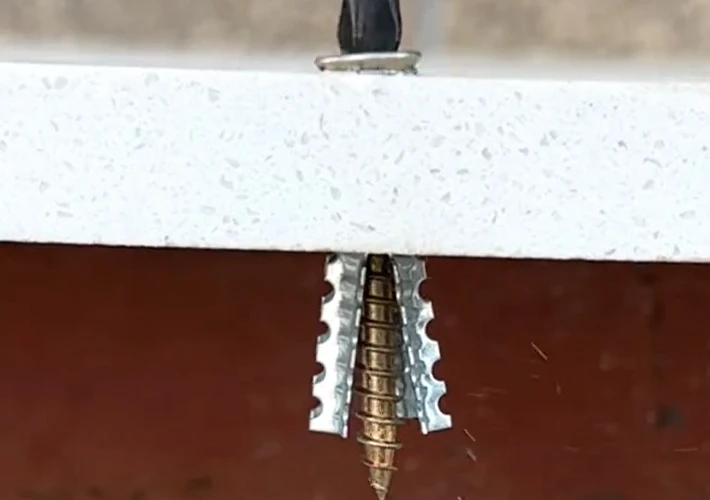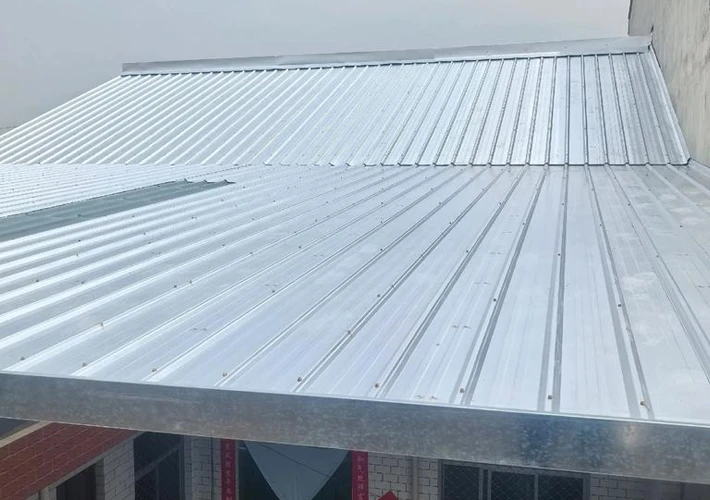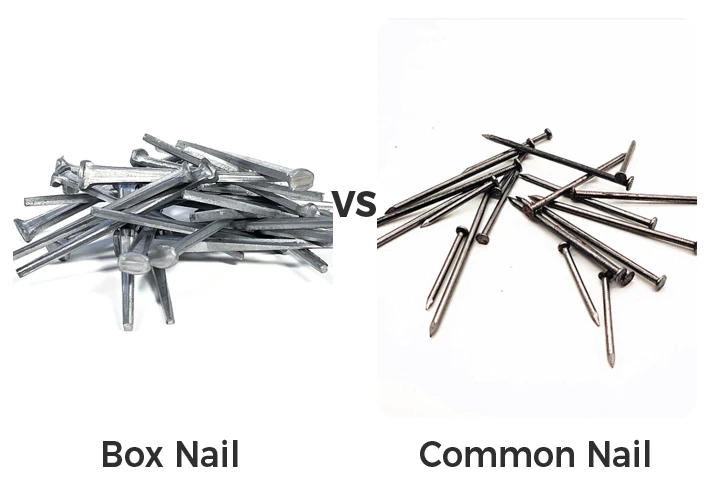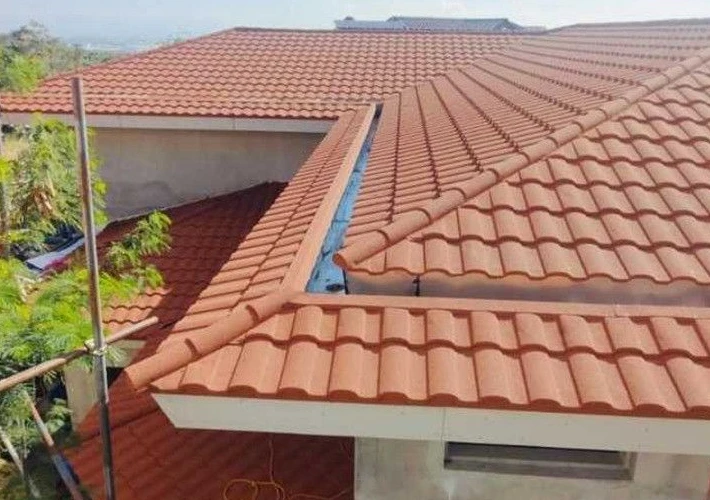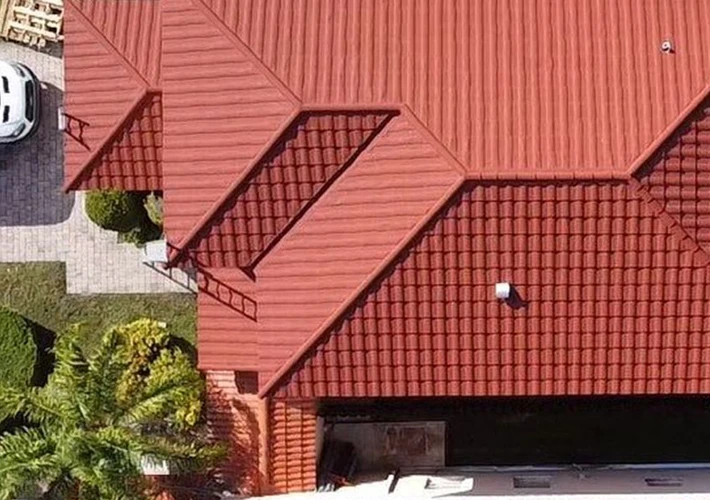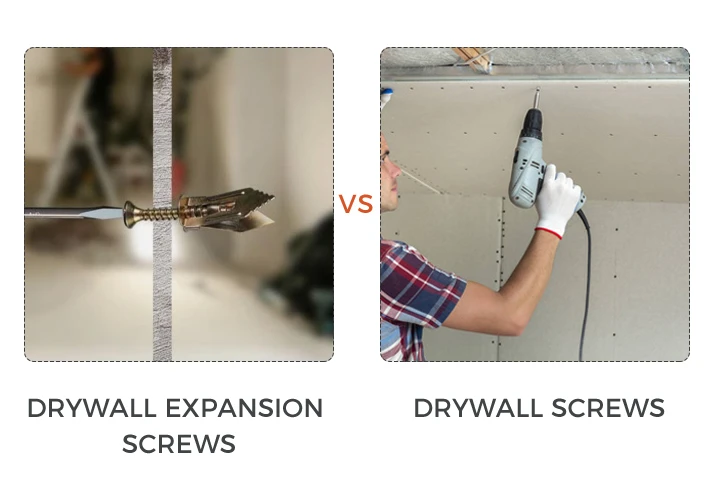In the world of outdoor protection, construction covering, and transportation sheltering, the terms “tarp” and “tarpaulin” appear constantly. Many people use them interchangeably, and in everyday conversation, that’s often fine. However, from a professional, industrial, and import-export perspective, there are subtle distinctions in origin, usage, and sometimes in quality expectations that are worth understanding.
This guide will explore those differences in detail, covering terminology, history, materials, manufacturing processes, industry usage, international trade considerations, and even buyer tips. Whether you’re a procurement officer sourcing for a construction project, a wholesaler importing from China, or simply someone trying to understand the correct word to use, you’ll find all the key points here.
Understanding the Terms
1.1 Definition of Tarpaulin
A tarpaulin is a large sheet of strong, flexible, water-resistant or waterproof material, often made from canvas, polyester coated with polyurethane, polyethylene (PE), or polyvinyl chloride (PVC). It usually has grommets (metal eyelets) at regular intervals along the edges to allow it to be tied down or secured.
Key characteristics of tarpaulin:
- Strong and durable fabric
- Water-resistant or waterproof coating
- UV resistance for outdoor use
- Comes in various grades: lightweight, medium-duty, heavy-duty
- Used for covering, protecting, and sheltering
1.2 Definition of Tarp
The word “tarp” is simply an abbreviation of “tarpaulin.” It originated in North America and is commonly used in casual conversation and marketing. In practice, “tarp” refers to the same physical product as tarpaulin.
Key points:
- “Tarp” is not a different material—it’s a shorter term
- More common in American English
- Widely used in advertising and product labels
- Sometimes implies a more casual or consumer-friendly product, though not always
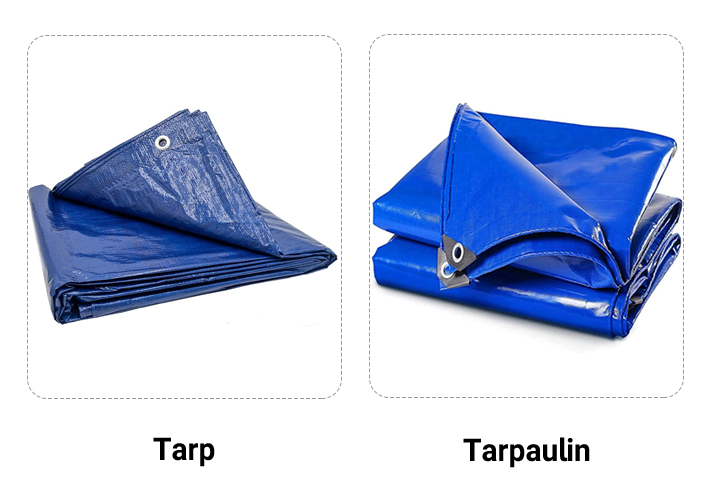
Historical Background
2.1 Origin of the Word “Tarpaulin”
The term tarpaulin dates back to at least the 17th century. It comes from two words:
- Tar: referring to the tar that was used to waterproof sails and canvas
- Palling/Pall: meaning a large piece of cloth
Early tarpaulins were made from canvas sails coated with tar to make them waterproof, mainly used by sailors to protect cargo and equipment from rain and sea spray.
2.2 Evolution into “Tarp”
The shortened form “tarp” emerged in American English during the early 20th century, when advertising and product labeling favored shorter, catchier terms. Over time, “tarp” became the dominant casual term in North America, while “tarpaulin” remained the formal term in international and British usage.
Usage Differences in Language
| Region | Common Term | Example in Use |
|---|---|---|
| United States | Tarp | “Grab that tarp to cover the truck bed.” |
| Canada | Tarp | “We need a tarp for the camping trip.” |
| United Kingdom | Tarpaulin | “We covered the scaffolding with a tarpaulin.” |
| Australia | Tarpaulin / Tarp | Both are used, but “tarp” is common in informal speech |
| International Shipping | Tarpaulin | “The bill of lading states 200 rolls of PE tarpaulin.” |
In industrial and B2B trade, “tarpaulin” is preferred because it’s the formal, technical term used in contracts, invoices, and customs documentation.
Material Differences (If Any)
Technically, tarp and tarpaulin refer to the same materials, but in the consumer market, a “tarp” might sometimes mean a lighter, cheaper, or disposable covering, while “tarpaulin” can imply a heavy-duty, reusable product. This is not a strict rule, but it happens in marketing.
Common materials:
- PE (Polyethylene) – Lightweight, affordable, often blue or silver, used in temporary covers.
- PVC (Polyvinyl Chloride) – Heavy-duty, waterproof, fire-retardant, often used in truck covers and industrial shelters.
- Canvas – Breathable, durable, but requires waterproof treatment; often used in camping or military applications.
- Mesh Tarpaulin – Allows airflow; used for scaffolding and shade.
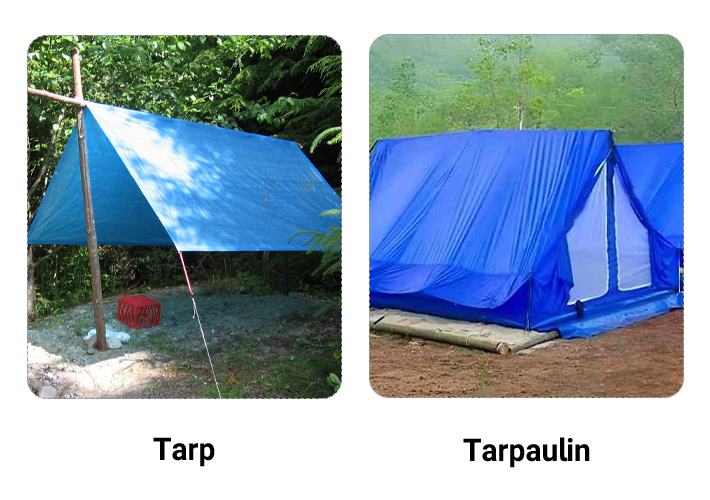
Manufacturing and Quality Grades
Whether you call it a tarp or a tarpaulin, the manufacturing process usually involves:
- Base fabric weaving – HDPE, polyester, or cotton.
- Lamination or coating – Applying LDPE film, PVC coating, or PU treatment for waterproofing.
- Heat sealing edges – To prevent fraying.
- Grommet installation – For securing the sheet.
Quality grades:
- Light-duty: ~80–120 GSM, for temporary cover.
- Medium-duty: ~150–200 GSM, for moderate weather protection.
- Heavy-duty: ~250–400 GSM, for industrial and transport use.
- Super heavy-duty: 500 GSM and above, used for long-term outdoor shelters.
Industry Usage Scenarios
6.1 Common Uses of Tarpaulins
- Construction sites: covering scaffolding, materials, and machinery.
- Transportation: truck bed covers, cargo ship covers.
- Agriculture: crop protection, grain storage covers.
- Outdoor events: temporary roofing, ground sheets.
- Camping: tents, rain covers, ground tarps.
6.2 Common Uses of Tarps
In consumer and retail contexts, “tarp” is used for:
- Backyard furniture covers
- Small boat covers
- Temporary rain shelters
- Picnic ground mats
- Emergency roof patching
Tarpaulin vs. Tarp in Marketing
From a B2B supplier perspective:
- Use “tarpaulin” in formal quotations, catalogs, and export documentation.
- Use “tarp” in online product titles and ads targeting consumers, especially in North America.
Example:
- B2B listing: “PVC Coated Heavy-Duty Tarpaulin 650 GSM for Truck Covers”
- B2C listing: “Heavy Duty Waterproof Tarp for Outdoor Use”
Price and Trade Considerations
8.1 Pricing Factors
The price of tarpaulin/tarp products depends on:
- Material: PE is cheaper, PVC is more expensive.
- Weight (GSM): Heavier material costs more.
- Coating type: Fire-retardant or UV-stabilized coatings add cost.
- Size: Larger sheets require more material and labor.
- Customization: Printing logos, custom colors, reinforced edges.
8.2 International Trade
In HS Code classification, both tarp and tarpaulin fall under similar headings, for example:
- HS Code 6306.12 – Tarpaulins, awnings, and sunblinds, of synthetic fibers.
Customs declarations always use “tarpaulin” because “tarp” is not recognized as a formal trade term.
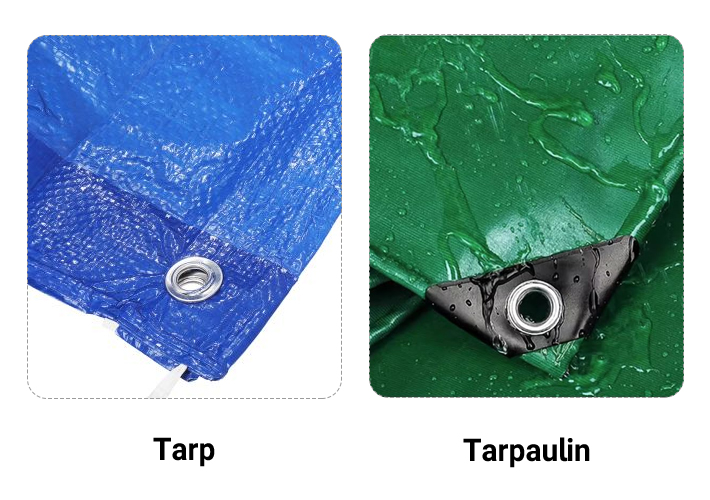
Advantages and Disadvantages
9.1 Advantages
- Versatility: Can be used in multiple industries.
- Durability: With proper material choice, lasts for years.
- Cost-effective: Compared to building permanent structures.
- Portable: Easy to transport and install.
9.2 Disadvantages
- Not permanent: Eventually degrades in UV and weather exposure.
- Quality variation: Market has both high-quality and low-quality products.
- Misleading labeling: Some low-grade tarps marketed as “heavy-duty” may not meet industrial standards.
Summary of Differences
| Aspect | Tarpaulin | Tarp |
|---|---|---|
| Definition | Full formal term | Shortened informal term |
| Common Usage | Industry, B2B, legal docs | Everyday speech, marketing |
| Origin | 17th century English | 20th century American English |
| Perception | More formal, professional | More casual, sometimes lighter |
| Trade Documents | Always “tarpaulin” | Rarely used in formal paperwork |
Buyer Recommendations
If you are a wholesaler or importer:
- Use “tarpaulin” in your formal purchase orders and HS code documentation.
- Specify GSM, material type, and coating to avoid quality disputes.
- When marketing to end-users in North America, use “tarp” for search engine optimization.
If you are a consumer:
- Don’t be confused—tarp and tarpaulin mean the same product.
- Pay attention to GSM, material, and reinforcement instead of just the name.
Final Thoughts
In short, “tarp” is simply a casual abbreviation for “tarpaulin”, but in different contexts, they carry slightly different connotations. For formal, technical, and trade purposes—especially in the B2B import-export business—“tarpaulin” is the correct and recognized term. For casual conversations, retail marketing, and American audiences, “tarp” works perfectly.
Understanding this nuance helps you communicate clearly in contracts, avoid misunderstandings with suppliers, and target the right audience in sales.
